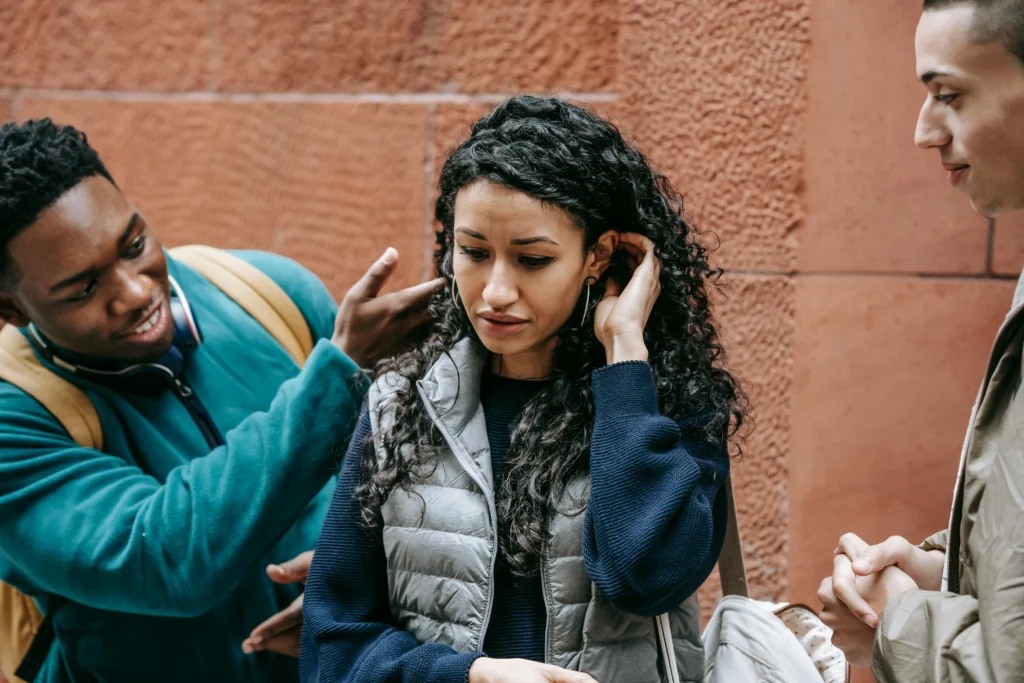Understanding the signs of an abusive relationship is crucial for protecting yourself and your loved ones.
This guide explores the warning signs of abuse and gives important, relevant information and advice for those affected.
Whether you are in an abusive relationship or have fears that someone close to you might be, knowing the indicators will help you take the right steps toward getting the help and support necessary.
Recognizing the Warning Signs of Abuse
Recognizing the warning signs of abuse is crucial for ensuring safety and well-being.
Abuse can take many forms beyond the physical, including emotional, verbal, and financial abuse, each with its own set of indicators.1
Understanding these signs is the first critical step toward seeking help and creating a safer environment for yourself or others:
Physical
Verbal
Emotional
Financial
Physical abuse consists of hitting, shoving, and many other kinds of physical violence. It is the easiest form of abuse to recognize because the injuries are visible, but in no way does that mean it has to be the earlier signs of an abusive relationship. In most cases, physical abuse escalates with behavior, usually starting with small incidents, probably less serious at first, then escalating over time.
Verbal abuse includes name-calling, insults, and manipulation strategies. It seeks to degrade and, at the same time, control you with words that are emotionally scarring but invisible. The abuser uses language to diminish your self-worth to the point that you feel an inherent sense of fear and begin doubting your potential and identity. Those with constant negative comments can bring great emotional sadness and mental problems to a person.
Emotional abuse involves isolation, gaslighting, and controlling behavior. This type of abuse undermines self-esteem and independence, leaving you to doubt the way you perceive and feel. More specifically, gaslighting is a manipulative tactic where the abuser gets you to doubt your reality, leading to confusion and emotional stability. Emotional abuse often leads to isolation from friends and family, making it complex to find help and identify the set patterns of abuse.
Financial abuse includes controlling finances, restricting access to money, and sabotaging employment. The motive is to keep the victim dependent financially so that they cannot leave the relationship. By taking absolute control over all financial resources, the abuser makes sure that you are left with no resources on which to fall back for sustenance. It may also prevent you from working and having your credit ruined, which makes it very hard to regain independence financially if you ever try to leave the relationship.
Court-Approved Domestic Violence Classes in Arizona
- Legal Support
- Online Classes
- Workshops
- Low Cost Guaranteed!
Indicators of an Abusive Partner
Recognizing the indicators of an abusive partner is vital for personal safety and well-being.
Common behaviors that may signal abuse include extreme jealousy, possessiveness, and rushing into a relationship too quickly.2
Trusting your instincts and paying attention to these warning signs is crucial.
If you notice any of the following behaviors, consider seeking help:
- Extreme jealousy and controlling behavior
- Possessiveness or monitoring your activities
- Quick involvement and pressure to commit early in the relationship
- Isolating you from friends and family
Trust your instincts, and don’t hesitate to reach out for support if these signs are present.
Quick Tip
Document and Plan for Safety
If you suspect you are in an abusive relationship, document incidents of abuse in a safe manner and make a plan for your safety.
Recognizing Domestic Violence in Different Contexts
Recognizing domestic violence in different contexts requires an understanding of how abuse can manifest uniquely based on cultural, social, and economic factors.
In some cultures, certain controlling or aggressive behaviors might be normalized, making it harder for individuals to recognize them as abuse.
Social and economic pressures can also play a role, with victims feeling trapped or unable to seek help due to financial dependence or community expectations.
Awareness of these variations is essential for identifying abuse and offering appropriate support, as what may be seen as a red flag in one context might be overlooked in another.
Red Flags in Relationships
- Caution!
Being aware of red flags in relationships is an important step that will help you identify both subtle and overt signs of an abusive relationship.
Here are some of the behaviors to be on the lookout for:
- Over-jealousy or over-possessiveness3
- Quick involvement in a relationship
- Controlling behavior
- Isolation from friends and family
- Consistent belittling or putdowns
- Threats of injury to self or others
Recognizing the Signs and Seeking Help: A Path to Safety and Healing
Domestic violence can take many forms, and recognizing the signs is the first step toward breaking the cycle.
It’s important to be honest with yourself if you notice these signs—acknowledging the reality of the situation is vital for your well-being and safety.
The sooner you seek help, the better your chances of escaping the cycle of abuse.
Whether you are a victim or someone seeking to reform abusive behavior, help is available.
At Cornerstone Healing Center, we offer comprehensive support tailored to your needs, with programs designed to promote healing and change.
Remember, there is always hope for a safer, healthier future, and taking the step to seek help is a powerful act of courage.
Frequently Asked Questions
What should I do if I recognize these signs in my relationship?
How can I help a friend who may be in an abusive relationship?
What resources are available for victims of domestic violence?
Key Takeaways
- Key Takeaways
- Recognizing the signs of abuse is crucial for seeking help.
- Abuse can be verbal, emotional, physical, or financial.
- Trust your instincts and reach out for support if you suspect abuse.
- Cultural and social contexts can influence the recognition of abuse.
- Providing support to loved ones in abusive relationships is critical.



